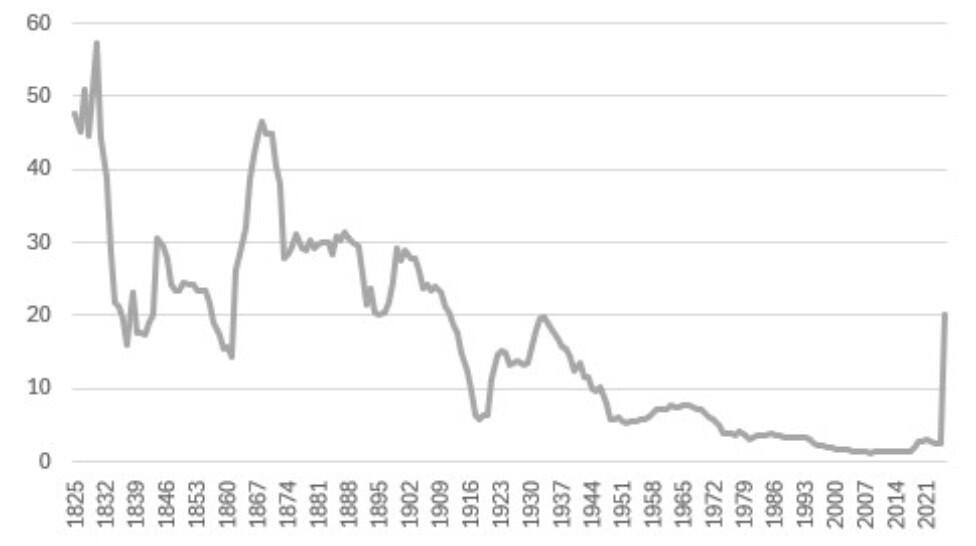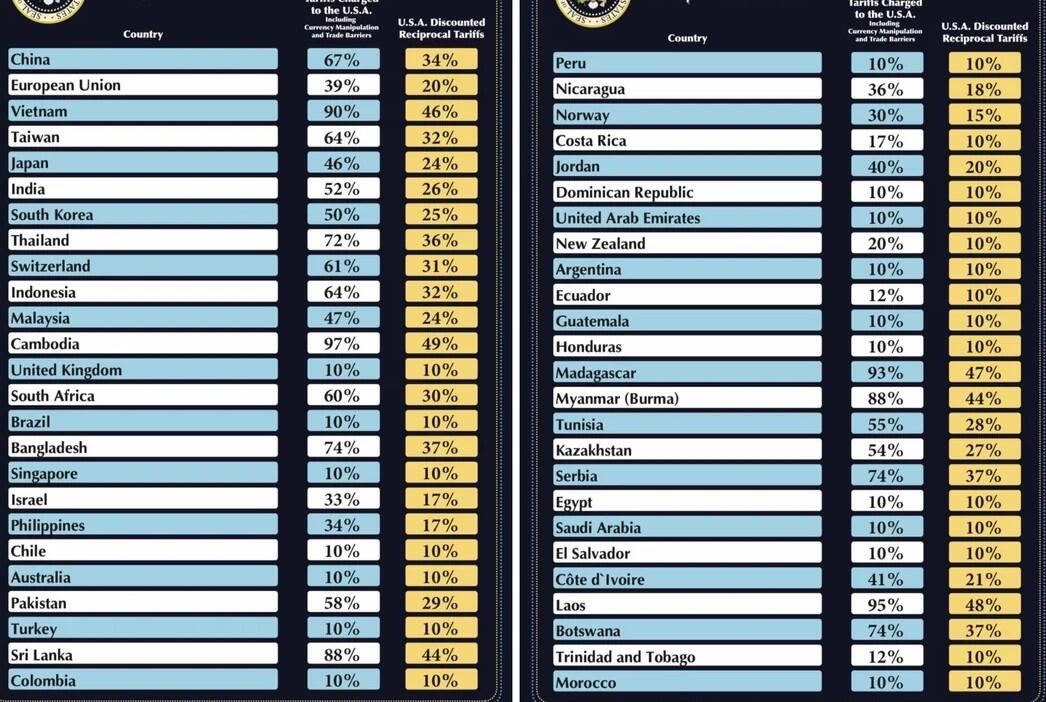United States President Donald Trump announced a blanket minimum 10% tariff on goods imported into America from all countries, with many of its biggest trading partners penalised further - notably China, Mexico, Canada and the European Union.
Trump says his “kind, reciprocal” tariffs will revive America as an industrial power, after growing its annual goods trade deficit for decades and dropping its share of global manufacturing output from a peak of 28.4% in 2001 to 17.4% in 2023, according to United Nations data.
Tariff measures in recent years have spiked at levels unseen for more than 90 years.

In this latest wave, the hardest hit was Cambodia, with a 49% increase, then Vietnam with 46%. Its biggest trade partner China was hit with a 34% tariff, India 26% and Japan 24%.
Australia got off relatively easily, with just the standard 10% tariff increase. In contrast, other close allies such as the European Union and Israel were hit with an additional 20% and 17% respectively.
It's unclear what Canada and Mexico are facing yet; while Russia does not appear on the list.
Additional tariffs by country

He also confirmed that a 25% tariff on foreign car and car part imports into America will start at midnight local time, as it looks to revive its domestic car manufacturing industry - bad news for the European Union, as many countries within it rely on their automotive industry output to the U.S., including Germany, the UK, France and Italy.
Find out more: Trump: US to impose 25% tariff on foreign-built cars
Short-term pain for long-term gain?
Global bank ING says today’s actions make the argument for reshoring at least some activity to the U.S. Much stronger, however it is unclear how manufacturing U.S. goods producers will have much of a profit incentive.
“U.S. manufacturing wages are amongst the highest in the world – the National Association of Manufacturers states that in 2023, manufacturing employees earned an average of US$102,629, including pay and benefits”.
"For China, it is around 25%, and for Korea, it is around 40% of that figure. Even in Germany, it is less than 75% of the US figure.
“This suggests that it would only make sense to reshore activity related to highly automated, high skill, high value-added production or for products where there is a strong market that consumers are willing to pay a premium for a 'Made in America' label.
“Given the costs of moving production to the US many other manufacturers may decide that it is cheaper to keep production facilities where they are. They may just absorb the tariff within operating costs and perhaps hope that the Administration’s attitude softens.”



